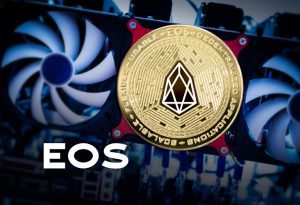
Table of Contents
ToggleHave you ever heard of Vigor? This project is a decentralized finance protocol that has developed a staking and lending platform oriented to the DeFi world and a stable cryptocurrency or stablecoin.
VIGOR is a DeFi platform under development on the EOS network. This DeFi platform aims to demonstrate the potential of this blockchain through the creation of a complete decentralized finance platform. The idea is that such a platform will offer new options to its users and users of other cryptocurrencies.
The EOS blockchain is characterized as a highly scalable blockchain and has the ability to deploy smart contracts. However, the DeFi ecosystem still lacks the necessary strength within EOS. One of Vigor’s main goals is to change this situation. In this article we will tell you all about what Vigor is and how it works.
Vigor and EOS
VIGOR, as we mentioned above, is a decentralized finance protocol that has the ability to employ various collaterals with the goal of developing a complete ecosystem of financial tools using the EOS blockchain. From what we’ve seen so far, Vigor is several things at once, but don’t worry, we’ll tell you all about it in more detail below.
The first thing to know is that VIGOR is a stablecoin with a value anchored to the US dollar. This coin has a collateralized operation system very similar to that of MakerDAO’s DAI stablecoin. The VIGOR coin is the engine of the Vigor protocol and the rest of the financial functions of the system are developed around this coin.
Among the financial functions offered on the platform are the option of saving, staking and collateralized loans in cryptocurrencies using the EOS token as the main protagonist.
Vigor’s operation is comparable to that of other DeFi platforms such as those found within the Ethereum network. However, in this case the main blockchain makes the difference. The EOS blockchain boasts great scalability and capacity to operate, so much so that it outperforms the Ethereum network.
A curious fact that we should know is that in the EOS network, the highest transaction record was 3996 transactions per second surpassing 300 times the highest record in the Ethereum network.

History of Vigor
This project has its origins in 2018 when its whitepaper was first published. This was a work carried out by VIGOR’s Genesis Custodians in collaboration with their DAC or Decentralized Autonomous Community or Decentralized Autonomous Community.
The published whitepaper established the economic strategy to be followed by the project as well as the governance and functions of the VIGOR protocol. Following the publication of the white paper, the project began its development phase. By December 15, 2020, the project had gone live with its first full version of the protocol. This is how VIGOR became one of the first EOS DeFi platforms.
How does VIGOR work?
As mentioned above, Vigor is a protocol with multiple functions. These functions are controlled by several smart contracts that are mostly written in C++, a general high-level and widely known high-level computing language. These smart contracts control all the functions of the Vigor platform. Among these functions we can find:
- DAC or Decentralized Autonomous Community: this community carries out the governance of the protocol. It is made up of a total of 21 trustees who are elected from among the genesis trustees and the users elected by the community.
- Oracles system: the network oracles are in charge of interconnecting the real world with the markets and services offered within the Vigor network.
- Vigor protocol: in fact, this protocol is itself a function controlled by smart contracts. This protocol includes other functions derived from it, such as lending, staking, among others.
We have just seen the three most important parts that make up the Vigor platform and that allow its operation to be carried out. All these parts pursue the same goal, which is to develop a lending and staking system that revolves around the VIGOR and EOS stablecoin.

What is VIGOR?
At the core of Vigor we can find two coins, one is the VIGOR stablecoin and the other is VIG, the project’s native token. Both coins were developed pursuing different objectives. These are the development of a decentralized stablecoin (VIGOR) to attract EOS users to make investments in the platform and thus earn a certain percentage of rewards obtained by the protocol loans. These profits are paid to the user in VIG tokens. But this is not the only objective of the creation of both currencies, as it also seeks to develop a stable financial system that allows a reduction of the risk of volatility in lending systems applied by VIGOR.
The VIGOR stablecoin was created with the objective of fulfilling certain characteristics. These are:
1. To be over-guaranteed. That is, the stability offered by the stable coin depends on the over-collateralization used in its development. In this aspect the oracle system plays an important role, as they seek to offer the best possible collateralization ratio thus avoiding the volatility found in the crypto market.
2. Protection against volatility events. Another important feature of Vigor’s stablecoin is that its collateral is protected against volatility events, which maintains a balance in terms of debts, insurance and loans made within the system.
What is VIG?
Now that we know the two tokens of the platform, let’s take a closer look at the functions of the native VIG token. This token represents an important part of the protocol and its economic model. Some of its functions are:
1. To be employed in the governance of the protocol, in the payment of fees and in the rewards obtained by the users of the platform.
2. To be a reserve asset within the protocol.
3. To be a deflationary issuance token and contribute to revaluation over time. It should be noted that the issuance of this token is limited to one billion coins.


